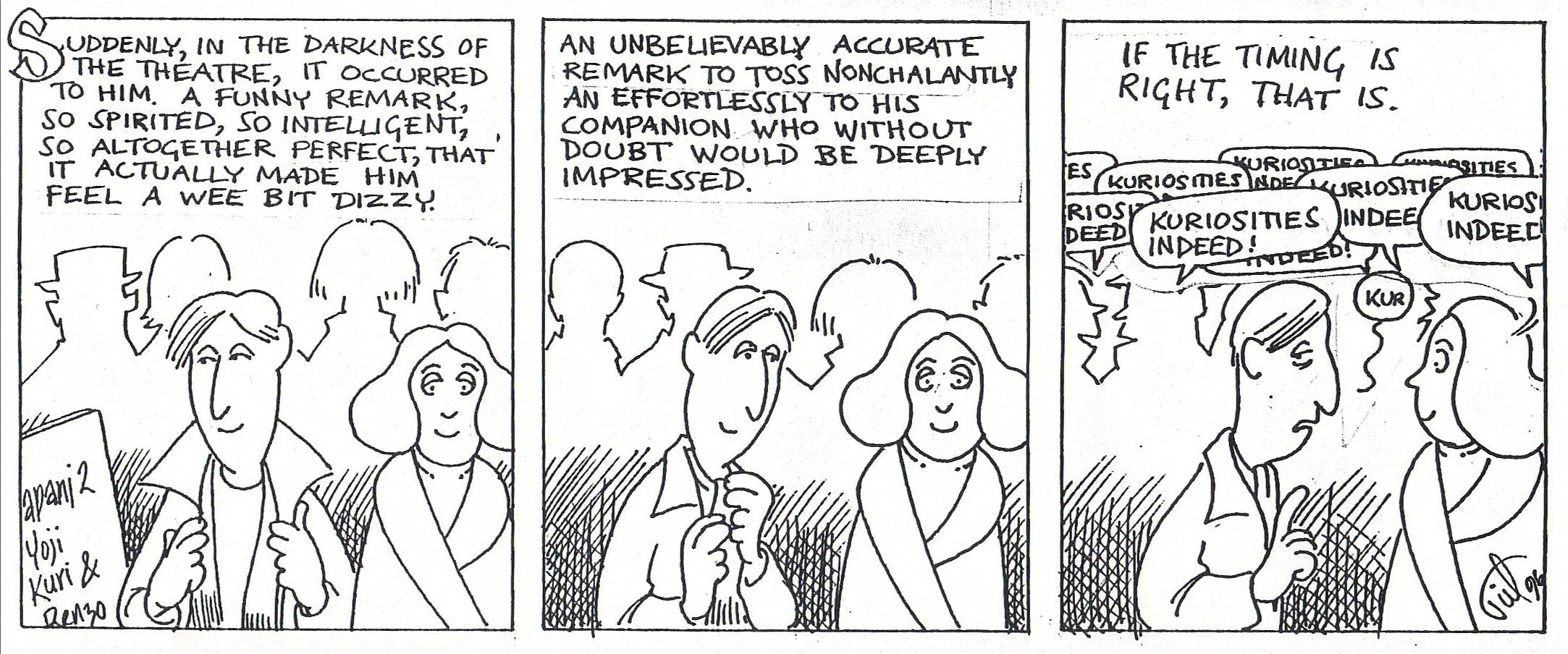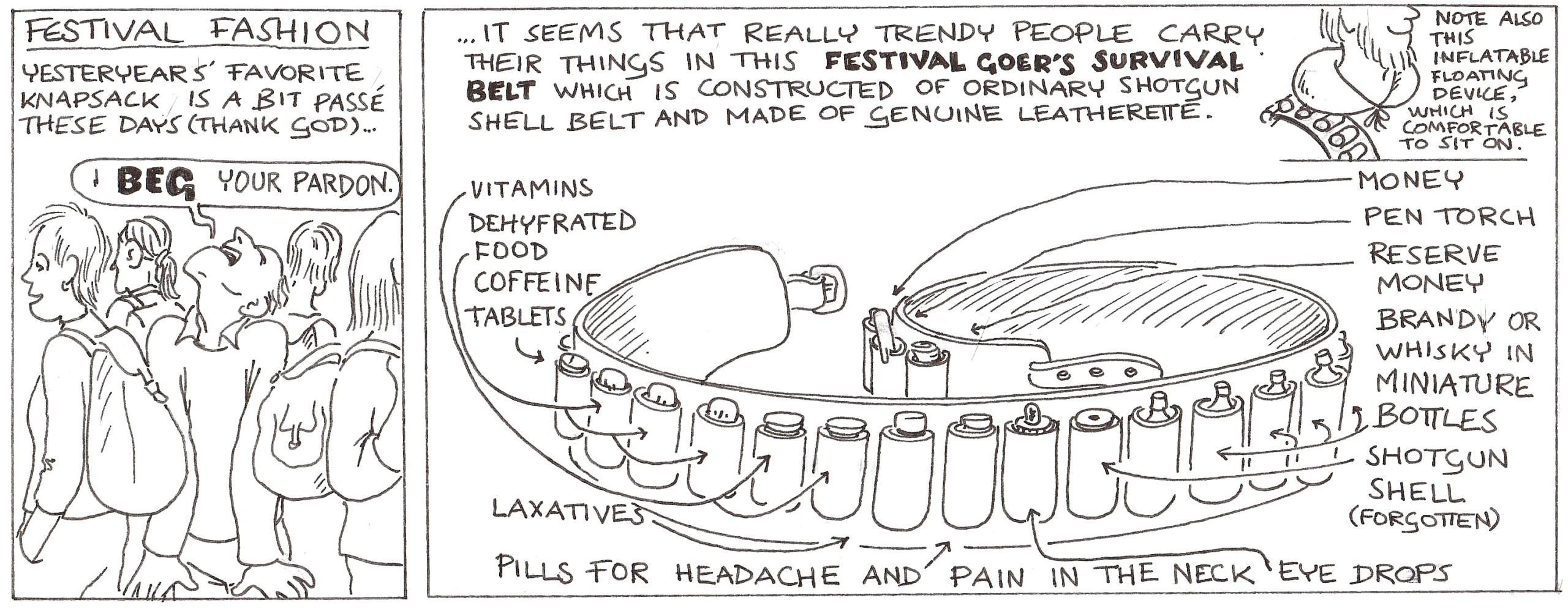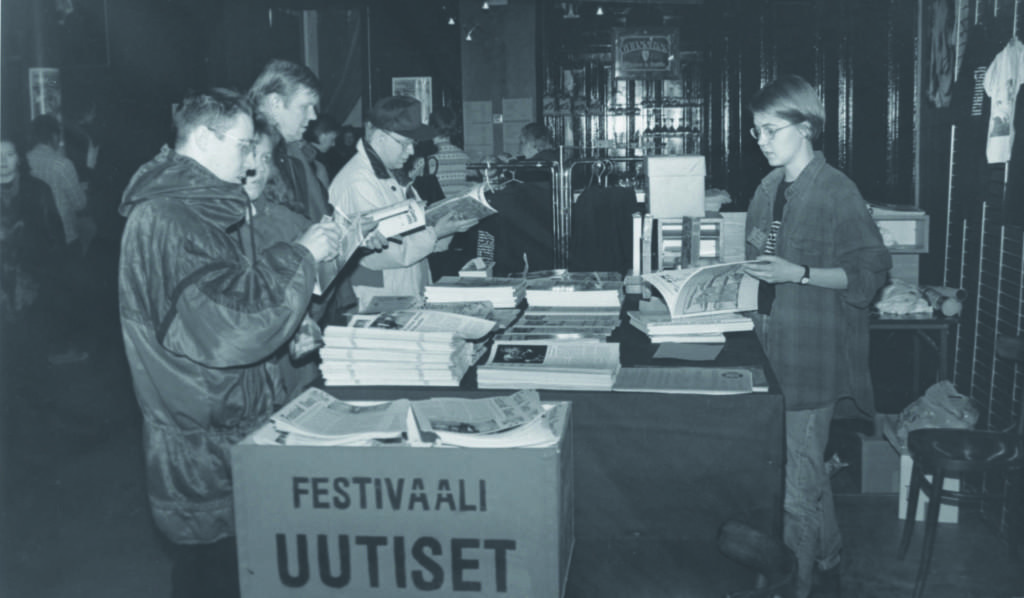How it started
1968
Local film club activists had a discussion about uniting the Tampere film clubs. In this discussion, Raimo “Rake” Silius presents the idea about organizing a film event in Tampere.
1969
The first national event, Tampere Short Film Days, was held in Tampere 28 February–2 March 1969.
1970
The first Tampere International Short Film Festival was held 19–22 February 1970. The first festival director was the founder Ilkka Kalliomäki.
The festival’s core structure was formed: Competitions, Special Programme and events. Kimmo Kaivanto designed the festival logo Creative Hands – Creative Film. The main prize, the Kiss statuette, was designed by Tapio Junto.
1974
Tampere Film Festival’s main objective was shaped; to screen short films of international standard that are universal or looking for new forms of cinematic expression. Tampere Film Festival shall provide a meeting place for different ideologies and filmmakers from every country who strive for world peace and social equality. Tampere Film Festival’s main aim is the promotion of Finnish film culture.
1978
The main tasks of Tampere Film Festival were formed:
- International short film competition
- Review of Finnish short films
- Film education and awareness
- Training sessions with various organizations for film professionals and enthusiasts
- Promotion of Finnish cinema
- Management of international cultural cooperation
- Organizing a local cultural event
Pekka Lehto, Pirjo Honkasalo, and A Small Kiss in 1976. They were awarded for the film Their Age.
Jury of the year 1977: Kelly O’Brien, Eugen Atanasiu, Juhan af Grann, Berndt Plagemann and J. Hunter Todd.
Saturday morning fever at Tampere University of Technology 1979: Raimo Silius, 35, and Aki Kaurismäki, 21.
1980’s–1990’s
1982
The era of Tampere University of Technology as a venue came to an end. Tampere Film Festival relocated to Tampere city centre cinemas.
1984
The annual Finnish Film Archive screenings began and were curated by Tampere Film Festival’s Raimo Silius and Finnish Film Archive’s Lauri Tykkyläinen.
1985
For the first time, more than a hundred Finnish films were screened.
1988
Video films as a technical breakthrough were introduced at the festival. For the first time, video films were screened at the festival.
Festival guests 1980: Mikko Niskanen, Camilla Mickwitz, Liisa Helminen and Merja Virtanen.
Small audience in 1989. Children’s screenings in cooperation with Pirkanmaa Film Center and Tampere nursery schools drew full audiences.
1992
The number of screenings increased significantly to a record-breaking one hundred screenings.
For the first time, Tampere Film Festival had Special Programme screenings for music videos and computer generated animations.
1996
Audience record: over 17,000 visitors.

Technical staff Pasi Nyyssönen, Jenni Aarniala and announcer Anitta Ahonen 1993 in the winding room of Pakkahuone.
On Klubi’s stage Juhani Alanen, Anna-Maija Lehtinen, Kirsi Kinnunen and Raimo Silius, 1993.
Audience in the lobby of Kino-Palatsi, 1991.
2000’s–2010’s
2001
The digitalisation of the film industry was prominently visible at the festival. Tampere Film Festival wanted to acknowledge the diversities of filmmaking with digital themed screenings a year prior to video films being accepted into the International Competition.
The Trash & Underground Film Festival was born. It showcases short films made by enthusiasts, often on a zero budget.
2002
Finnkino Plevna was introduced as the new main venue.
Live accompanied silent films became a permanent part of the Special Programme.
2003
Jukka-Pekka “Juise” Laakso took over as festival director.
Competition pre-selection boards were disbanded and Tampere Film Festival began making the selections independently.
2004
Georges Méliès‘ long career was celebrated with a special screening presented by the director’s granddaughter Marie-Hélène Méliès-Lehérissey and accompanied on piano by her son Lawrence Lehérissey-Méliès.

2011
One of the pioneers of film, Harun Farocki (1944–2014), visited the festival to attend his retrospective screenings.
2014
Austrian multidisciplinary artist and film director Gustav Deutsch (1952–2019) visited the festival to talk about the making of Shirley – Visions of Reality with artist Hanna Shimek.
2018
Tampere Bootcamp for international film students was held for the first time, offering them an intensive training and networking event with the opportunity to get feedback on their films. The participants came from China, Finland and Estonia.
Wall is a screen tour 2015.
Photo: Laura Vanzo / Visit Tampere
Town hall reception, 2017.
Bootcamp’s sauna, 2019.
Photos: Jani Rutanen
2020’s
2020
Tampere Film Festival celebrated its 50th anniversary.
2021
Due to the COVID-19 pandemic, the festival was held entirely online.
Generation XYZ, the new competition for genre films, was launched in collaboration with the American production company XYZ Films.
2022
Tampere Film Festival screenings moved to a new main venue, Finnkino Cine Atlas.
2023
The festival’s Award Ceremony returned to a familiar venue from previous years, the Tuulensuu Palace, formerly known as Kino-Palatsi.
2024
After 30 years at Tullikamari, Tampere Film Festival headquarters moved temporarily to the historic Finlayson area due to renovations.
Raimo “Rake” Silius, founding member of Tampere Film Festival and a true legend of the event, passed away in November 2024. Throughout the decades, he was involved in the festival in one way or another, most recently behind the scenes as a board member. We thank Rake for his remarkable life’s work and dedication to the festival.
2025
The over 50-year career of film director Pirjo Honkasalo was celebrated with an extensive retrospective. In the Opening Screening, Honkasalo’s feature-length fiction film Orenda (2025) was exceptionally presented in its Finnish premiere.
The final Rake Special screening, curated by Raimo Silius, was shown.
Jury members of Tampere Film Festival 2020.
Photo: Jani Rutanen
Virtual Saunatour with festival director Jukka-Pekka Laakso, 2021.
Live streaming from Olympia-kortteli’s studio 2021.
Photos by Kimmo Siniluoto


